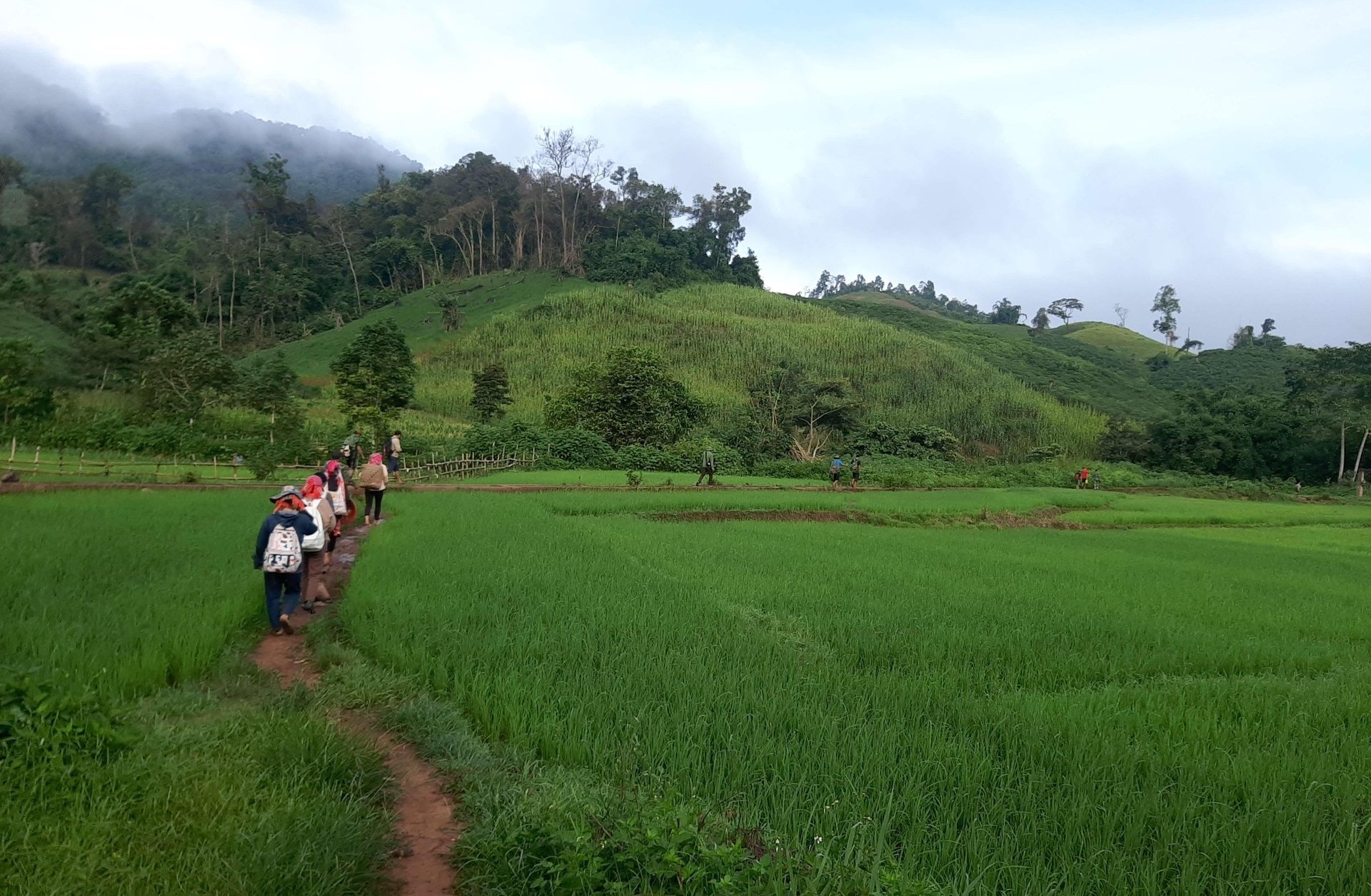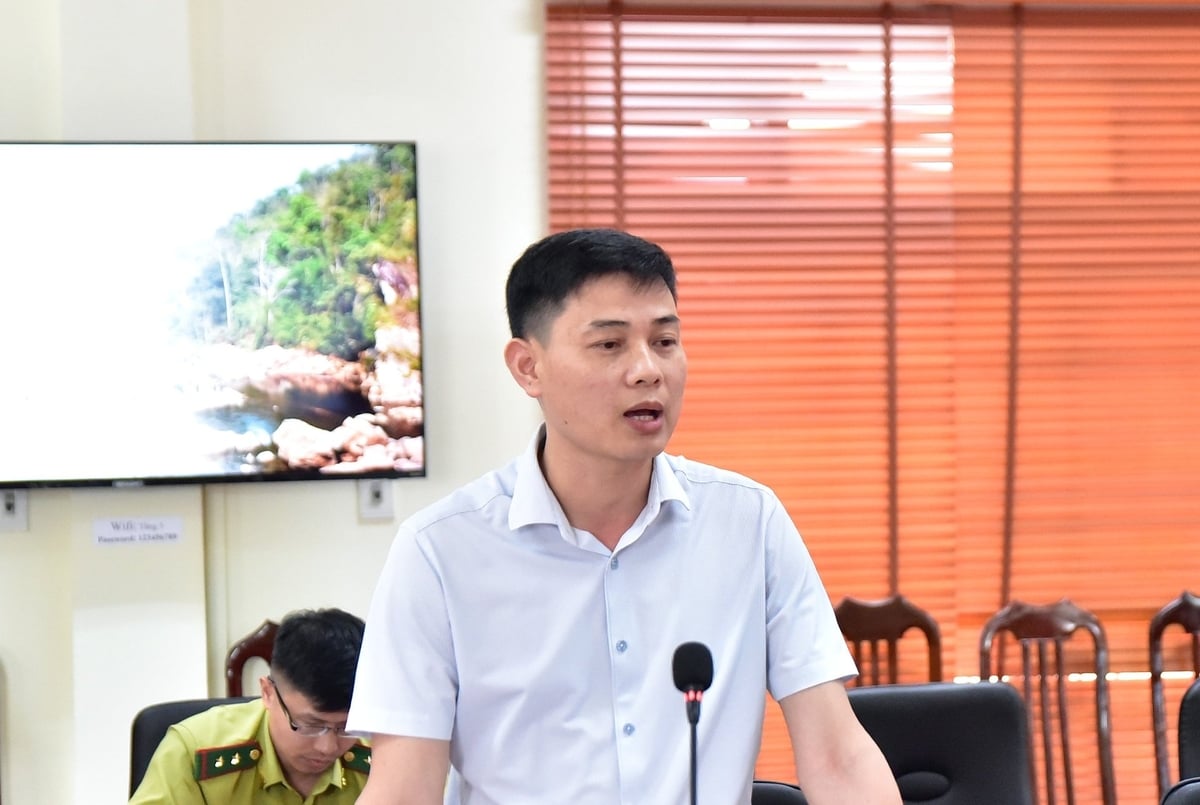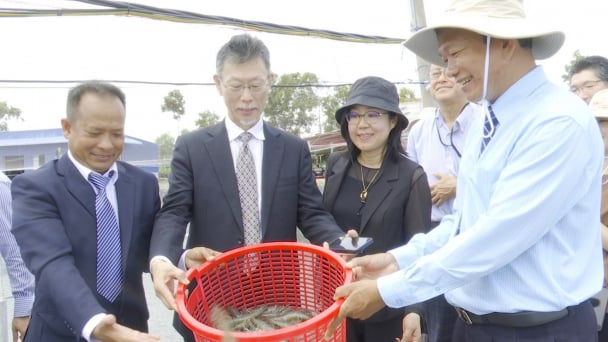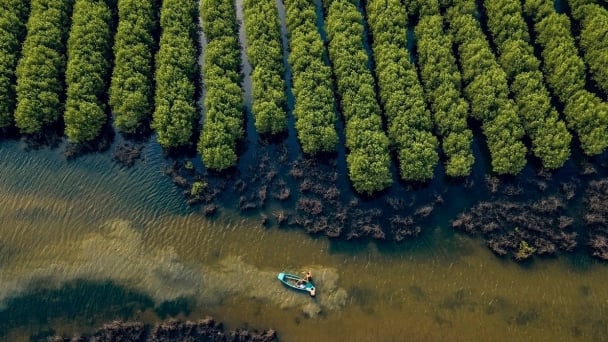June 17, 2025 | 00:06 GMT +7
June 17, 2025 | 00:06 GMT +7
Hotline: 0913.378.918
June 17, 2025 | 00:06 GMT +7
Hotline: 0913.378.918
Located at the biological "crossroads" where Northern Indochina, Southern China, and the Himalayas meet, Muong Nhe Nature Reserve is one of Vietnam’s most biologically valuable special-use forests along the border region. More than just a precious forest area, it also serves as a "frontline" where dedicated forest rangers work tirelessly to patrol and protect the forest under challenging and risky terrain.
Covering over 36,000 hectares with a forest cover rate exceeding 77%, Muong Nhe Nature Reserve is dominated by moist subtropical evergreen forest, which grows at elevations above 700 meters and accounts for more than 96% of the area making it a representative example of Vietnam's special-use forest ecosystems.
The reserve is home to 976 plant species, including 33 endemic and 128 rare or endangered species listed in the Vietnam Red Data Book and the IUCN Red List. It also shelters 458 species of wild animals, among them 97 species of high conservation value both nationally and internationally, such as the Northern black-crested gibbon, white-cheeked gibbon, flying squirrel, yellow-breasted bunting, and wildcats.

The model of a national park will enable the integration of conservation with sustainable livelihoods and controlled ecotourism. Photo: Muong Nhe NR.
According to Mr. Diep Van Chinh, Director of Muong Nhe Nature Reserve: “Based on the criteria outlined in Article 6 of Decree 156/2018/ND-CP, which provides detailed regulations on implementing certain articles of the Forestry Law, Muong Nhe Nature Reserve meets all the requirements to be upgraded to a national park.”
He explained that this upgrade would open up opportunities for enhanced investigation and in-depth research on rare and endemic plant and animal species, as well as the characteristic ecosystems of the highland region.
Additionally, it would allow fuller access to mechanisms, policies, and resources, and improve the biodiversity database system, providing a solid foundation for focused conservation planning. “We hope this is not just a change in title but truly a step forward in management quality and staff capacity, in line with national standards,” Mr. Chinh stated.
To meet the upgrade requirements, Muong Nhe Nature Reserve has maintained seven specialized forest protection teams across buffer zone communes. During the 2020-2025 period, the unit handled 31 violation cases, a significant reduction compared to 2015-2020. It successfully prevented over 650 illegal forest entries, cutting losses by 91% and reducing the affected forest area to just 12.1%.
These numbers reflect the dedication of forest rangers who tirelessly stay deep in the forest and high mountains day and night. To ensure their long-term commitment, specific support policies from the central government and relevant organizations are essential. “We hope for additional personnel policies and special allowances for the dedicated forest protection staff. They are the ones who stand firm day and night on the frontlines, protecting the ‘green lungs’ of the Muong Nhe border region,” Mr. Chinh shared.

5 key expectations from the Management Board include: personnel policies and special allowances; authority and mechanisms for the specialized protection force; a national target policy for border areas; multi-sector and multi-stakeholder cooperation; and digital capacity training. Photo: Kieu Chi.
In addition, according to Mr. Chinh, it is necessary to strengthen mechanisms and clearly define practical authority for the specialized forest protection forces, in line with the requirements of on-site forest protection tasks. Especially regarding patrols, documentation, and initial monitoring, Mr. Chinh recommends establishing special mechanisms for hazardous duty allowances and professional incentives to expanded authority for patrols and handling violations.
Muong Nhe Nature Reserve also proposes developing a national target program dedicated to border and particularly difficult areas, specifically for the forestry sector. This policy should include investment in technical infrastructure to support conservation and eco-tourism, environmental education, developing local human resources with specialized knowledge in conservation, tourism, and technology, and supporting sustainable livelihood models linked to forest protection to reduce pressure on forest resources.
Effective forest protection relies heavily on support from local authorities, international organizations, and research institutions, universities, and colleges. The reserve hopes to receive assistance in technical support, funding, training, awareness-raising communication, and capacity building for the specialized forest protection force.
On another front, regarding enhancing digital skills, Muong Nhe Nature Reserve suggests investing in long-term training programs for staff on digital transformation skills for forest resource monitoring, using technologies like GPS, SMART software, and specialized tools for patrolling, monitoring, and reporting data on forest and biodiversity protection.
One of the highlights in forest protection at Muong Nhe Nature Reserve is the increasingly deep and proactive involvement of the local community. Mr. Diep Van Chinh shared, “We hope the buffer zone community not only lives near the forest but also lives by the forest - that is, alongside it, protecting and sustainably utilizing its resources.”
This orientation has been realized through the forest environmental services payment policy, implemented since 2013. Accordingly, Muong Nhe Nature Reserve contracts annual forest protection tasks to 28 villages in the buffer zone, contributing to sustainable livelihoods for local people. From 2020 to 2025, total payments exceed 132 billion VND, helping each household increase their income by 5 to 25 million VND annually.

Local communities in the buffer zone of Muong Nhe Nature Reserve participated in an awareness and training session. Photo: Muong Nhe NR.
This policy not only improves livelihoods but also inspires a sense of community responsibility in protecting forest resources. “At first, local residents weren’t familiar with it. But now, after awareness campaigns and skill-building trainings, people proactively participate in forest protection efforts. Many not only help safeguard the forest but also report violations and coordinate with forest rangers,” said Mr. Chinh.
The relationship between local authorities, forest protection forces, and the community has grown increasingly close, forming a strong internal force for conservation. Together, they create a solid and coordinated "link in the chain". This bond serves as a vital foundation for more effective and sustainable forest protection in the future - when Muong Nhe Nature Reserve upgraded to National Park.
* Currency exchange: 1 USD = 25,750 VND (source: Vietcombank)
Translated by Kieu Chi
![Turning wind and rain into action: [4] Bringing climate bulletins to remote and isolated areas](https://t.ex-cdn.com/nongnghiepmoitruong.vn/608w/files/linhnhp/2025/06/14/1152-z6704423696987_15fd32ffc26d590d204d520c9dac6786-nongnghiep-151141.jpg)
(VAN) The Vietnam Agriculture and Nature Newspaper interviewed Mr. Vu Thai Truong, Acting Head of Climate Change and Environment at UNDP Vietnam, to gain deeper insight into how climate bulletins are delivered to farmers.

(VAN) In Tien Giang, a high-tech shrimp farm has developed a distinctive energy-saving farming model that has yielded promising results.
![Turning wind and rain into action: [3] 300.000 farmers benefit from agro-climatic bulletins](https://t.ex-cdn.com/nongnghiepmoitruong.vn/608w/files/news/2025/06/12/e5a48259d6a262fc3bb3-nongnghiep-125122.jpg)
(VAN) The agro-climatic bulletin has become a valuable tool for farmers in the Mekong Delta. After more than five years of implementation, the initiative is gradually being expanded nationwide.
![Turning wind and rain into action: [2] Providing forecasts to the people](https://t.ex-cdn.com/nongnghiepmoitruong.vn/608w/files/news/2025/06/12/e5a48259d6a262fc3bb3-nongnghiep-103927.jpg)
(VAN) In addition to improving the quality of hydrometeorological forecasts, putting forecast bulletins into practical use is crucial for production and disaster prevention.

(VAN) Blue carbon is receiving attention for its rapid absorption capacity and vast potential. It represents a promising nature-based solution to respond to climate change.
/2025/06/11/3507-1-161904_583.jpg)
(VAN) Seagrass beds and coral reefs serve as 'cradles' that nurture life in the ocean depths, creating rich aquatic resources in Vietnamese waters.
![Turning wind and rain into action: [1] Forecasting for farmers](https://t.ex-cdn.com/nongnghiepmoitruong.vn/608w/files/news/2025/06/11/e5a48259d6a262fc3bb3-nongnghiep-111919.jpg)
(VAN) Weather is no longer just a matter of fate. Forecasts have now become an essential companion for farmers in every crop season.